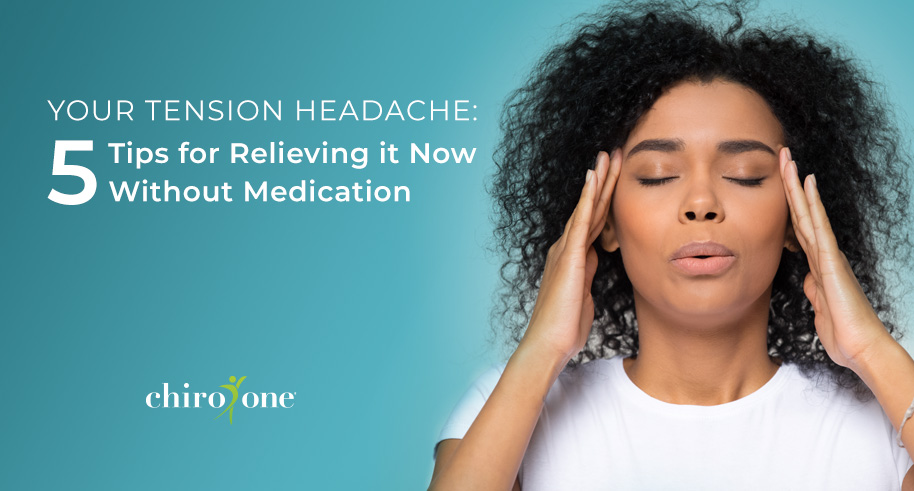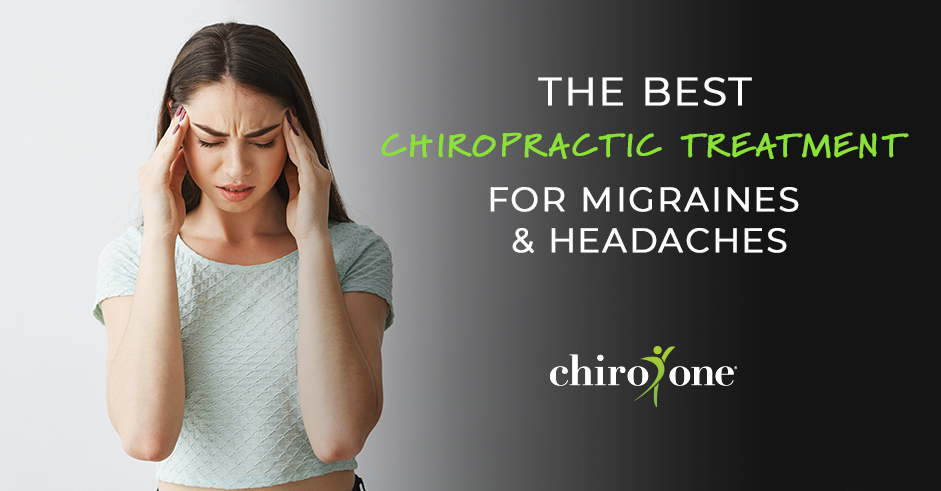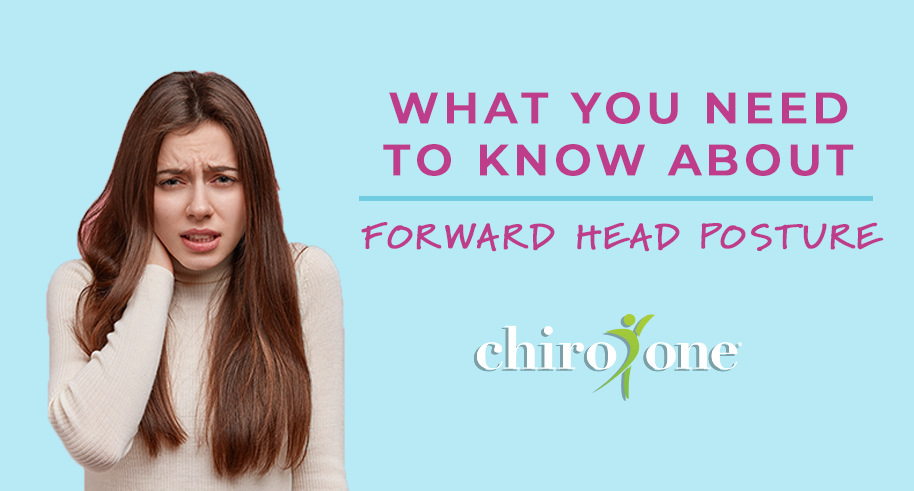Living with Headache Pain?
Take the first step toward relief.
Overview
Headaches are the most commonly experienced pain, affecting 45 million Americans each year, with more than 4% of the population experiencing headache pain 15 days or more each month.
Dr. Michelle Blanton | Chiro One of Oak Forest, IL
Did you know? Nearly 45 million people experience headache pain each year
Common Symptoms of Headache Pain
While headache symptoms may vary depending on the type of headache you’re experiencing, most headache pain presents as:
- Pain on one or both sides of your head
- Pain that feels like a band or vice around your head
- Pain involving the back of the head or neck
- Throbbing pain
- Difficulty sleeping or concentrating
Most headaches begin slowly. If you experience a sudden onset of pain, especially intense pain, seek medical attention immediately.
Types of Headache Pain
Understanding the type of headache pain you’re experiencing can help your doctor identify the cause and create a plan to help you find relief. The most common types of headaches include:
- Tension headaches. Occurring in about three of every four adults, tension headaches are the most common of all headaches, producing a dull, squeezing pain on both sides of the head. The shoulders and neck can also ache. These headaches often have a neuromusculoskeletal cause, such as jaw disorders or poor posture.
- Cluster headaches. Uncommon but very severe, cluster headaches tend to come in clusters, with one to eight headaches a day during a one- to three-month period every year. The pain always strikes one side of the head, leaving the eye on the painful side red and watery. The eyelid may droop, and the nose runs or is blocked. Cluster headaches start abruptly and last 30 to 60 minutes. Nausea and sensitivity to light and sound may accompany the pain.
- Migraines. Migraines occur less often than tension headaches but are usually much more severe. They often begin in the evening or during sleep and can be preceded by fatigue, depression, and sluggishness or by irritability and restlessness. About 20% of migraines begin with one or more neurological symptoms called an aura. This may include halos, sparkles or flashing lights, wavy lines, and even temporary loss of vision, or produce numbness or tingling on one side of the body, especially the face or hand.
- Medication headaches. Headaches are a common side effect of many prescription medications. Many medications used to treat headaches can also cause medication overuse headaches or rebound headaches. Migraine sufferers are particularly vulnerable to this cycle of pain.
- Sinus headaches. Acute sinusitis causes pain over the forehead, around the nose and eyes, over the cheeks, or in the upper teeth. Stooping forward increases the pain. Thick nasal discharge, congestion, and fever may indicate that your headache pain is caused by sinusitis.
How to Know if Your Headache Pain is Migraine Pain
One way to distinguish a migraine headache from other types of headache pain is to use the POUND checklist:
- P: pulsating pain
- O: one-day duration of severe untreated attacks
- U: unilateral (one-sided) pain
- N: nausea and vomiting
- D: disabling intensity
Because migraine symptoms vary widely, at least half of all migraine sufferers think they have sinus or tension headaches, not migraines. It’s important to have your headache pain evaluated so your doctor can determine the type and cause of your headache pain to help you find relief.
Is Your Pain Chronic Pain?
Doctors categorize pain in these three ways:
- Acute pain: this is pain which comes on suddenly and usually lasts a few days to a few weeks – acute pain would describe a headache you’re currently experiencing
- Subacute pain: this could describe headache pain that you routinely experience over a period of 4 to 12 weeks (about 3 months)
- Chronic headache pain lasts longer than 12-weeks, and occurs daily, to the point of disrupting your life – migraines and cluster headaches are often chronic
Your chiropractor can identify the source of your headache pain and determine a course of treatment to provide lasting relief. Chiropractic care is effective for treating pain at all stages – acute, subacute, and even chronic pain.
Common Causes
Common Causes of Headache Pain
While the causes of headache pain can be specific to the type of headache you experience, common causes of headache pain can include:
- Fatigue and emotional stress
- Problems involving the muscles or joints of the neck or jaw (these are a top cause of tension headaches)
- Changes in the brain’s blood flow and nerve cell activity, triggering migraine pain
- Sudden, strenuous exercise
- Stress
- Weather changes
- Low blood sugar, dehydration or irregular eating patterns
- Lack of sleep
- Certain foods and drinks
Risk Factors
Common Risk Factors for Headache Pain
While most people will experience some type of headache pain during their lifetime, there are factors that can put you at greater risk for the more serious types of headache pain:
- Biological Sex – cluster headaches occur five times more often in men than women, while migraines are two to three times more common in women than in men
- Genetics – 70% of migraine sufferers have at least one close relative with the condition
When to Seek Treatment
When to Seek Treatment for Headache Pain
While we believe all pain should be evaluated, headache pain that checks these boxes could be serious. Consult a doctor if you experience any of these symptoms:
- Headaches that first develop after age 50
- A major change in headache pattern
- An unusually severe headache
- Pain that increases with coughing or movement
- Pain that grows steadily worse
- Changes in personality or mental function
- Fever, stiff neck, confusion, decreased alertness or memory, or other neurological symptoms such as visual disturbances, slurred speech, weakness, numbness, or seizures
- Redness and pain in the eye
- Pain and tenderness near the temples
- Pain resulting from a head injury
- Pain that interrupts your daily life
- Pain that comes on abruptly, especially if it wakes you up
- Headaches in patients with cancer or impaired immune systems
A Harvard study of 20,084 men aged 40 to 84 reported that having migraines boosts the risk of heart attacks by 42%. If you are a man living with migraine headache pain, consult your doctor.
At Chiro One, we don’t believe anyone should have to live with pain. If headache pain is disrupting your life, chiropractic care from Chiro One can help. Learn more about how we diagnose pain, and what to expect at your first chiropractic appointments.
Tips for Preventing Headache Pain
Choose lighting that doesn’t strain your eyes and limit excessive noise as much as possible.
Sleep in a cool, dark room, and do your best to wake up and go to bed at the same time every day (yes, even on weekends.) Avoid screen time an hour before bed, and limit naps, which may interfere with nighttime sleep.
Obesity increases the risk of chronic headaches, and exercise can help you manage your weight. Also, during physical activity, your body releases chemicals that block pain signals to your brain. These chemicals can also reduce anxiety and depression, conditions which can worsen migraines.
Practice regular meditation or take frequent breaks during your workday. Engage in hobbies that bring you joy, and find ways to simplify your life where possible.
Eat plenty of protein to help you regulate your blood sugar, hydrate properly, and pay attention to any foods that appear to cause a reaction in your body. Common headache triggers include alcohol, sulfites, MSG (monosodium glutamate), nitrates and nitrites, aged cheese, and even some citrus fruits.
“I came to Chiro One to get rid of my migraine headaches and they exceeded my expectations. I went from suffering through migraine headaches three times a week to over a year without a single episode…”
– Kyle M.
Find Relief with Help from Chiro One
Chiro One’s gentle chiropractic care delivers strong patient outcomes with exceptional levels of patient satisfaction. Here’s how Chiro One’s non-surgical, drug-free approach effectively treats the leading causes of headache pain:
Thorough Upfront Evaluations
To assess your physical health, understand your daily routine and goals
Gentle Chiropractic Adjustments
To relieve pain and improve joint mobility and function
In-Clinic Therapies
To help you build strength, improve your range of motion, flexibility and balance, anddevelop muscle memory for longer lasting results
New Patient Offer
Exclusions ApplyChiropractic Evaluation
- Diagnostic Exam
- Consultation
- Personalized Care Plan Recommendation


